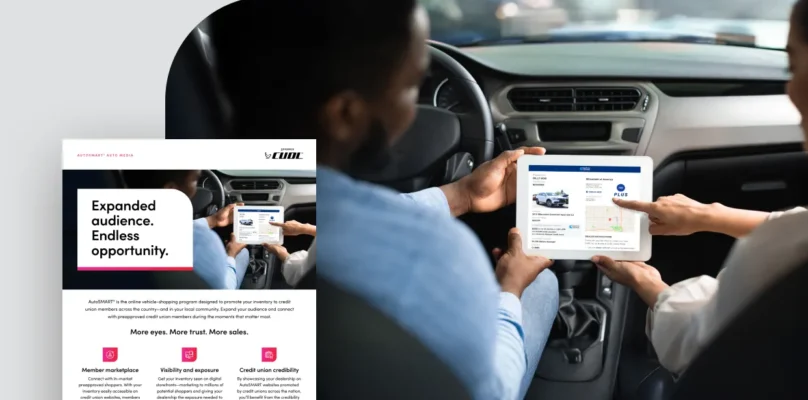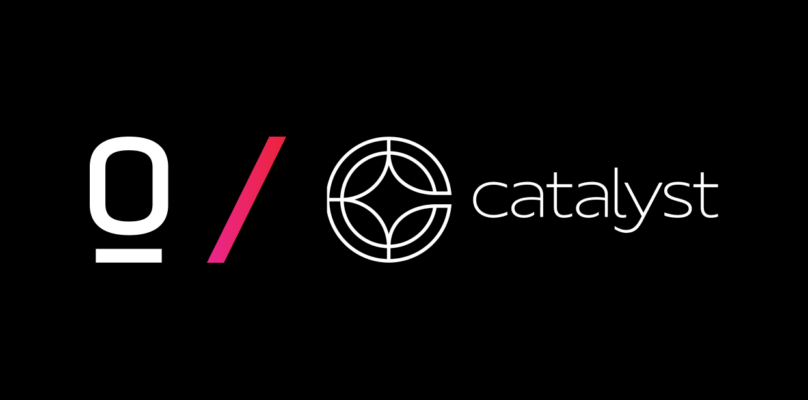Every lender is seeking borrowers with “prime” credit – meaning competition is fierce and rates must be set very low. Matt Roe, chief revenue officer at Open Lending, says credit unions should be taking advantage of opportunities available with non-prime borrowers –consumers with credit scores ranging from 560 to 700.
During a recent webinar hosted by Origence, Roe noted a study found 88 percent of members intend to finance their next vehicle through their credit union.
With that said, where credit unions fall short with the non-prime segment is maintaining hard and fast rules, such as having a requirement for automobile buyers to put down 20 percent of the purchase price, which loses loans at the dealerships.
“Non-prime borrowers are a different buyer compared to a prime consumer,” Roe explained to the webinar audience. “Sometimes they have limited credit experience, or a single issue that drove down their credit score.”
Typically, people who are in this segment do not have access to a savings account, and therefore are unable to put a large down payment toward a vehicle purchase, Roe continued. He said these subprime borrowers are not rate-sensitive, they are monthly payment driven. Credit unions that approve these types of loans, with minimum money down and a low monthly payment, are much more likely to capture that business.
Non-prime borrowers represent an easy way for credit unions to gain market share, while gaining borrowers — and therefore relationships — which could lead to cross-sell opportunities and future business down the road.
To help credit unions make these important decisions, Open Lending has incorporated almost $14 billion of auto loan performance data into its risk-based pricing models, which it offers to credit unions through its Lenders Protection program.
Brad Delcamp, regional vice president, lender client experience at Origence, detailed a new integration partnership between Origence and Open Lending, which allows credit unions that are using Origence arc OS (previously Lending 360 loan origination system) the ability to leverage advanced auto decisioning for near and non-prime loans. As a result, credit unions have the flexibility to set parameters as to what credit level gets sent to Open Lending for decisioning.
Chip shortages, rising rates create turbulent environment
According to Roe, there is a “great deal of uncertainty” in the auto lending environment. Among the many factors: continuing supply chain problems leading to a lack of inventory, rising interest rates, and the looming possibility of a recession.
“Today’s modern cars use more than 2,500 microchips, so the chip shortage that has been leading to a lack of vehicle inventory is real,” Roe assessed. “The pandemic has really reshaped the auto industry and lenders are dealing with issues never seen before.”
Automobile values are at an all-time high, which Roe said is causing affordability issues. In recent months, the Fed has been aggressively raising interest rates after 2022 started with a low-rate environment.
Credit unions need to be able to leverage the data they have in their loan origination systems to compete in today’s environment. Unfortunately, chip shortages are expected to continue into late 2023, possibly even early 2024. “The number of weeks of income needed to purchase the average vehicle has jumped from 34 weeks pre-Covid to 42 weeks today,” noted Roe. “If credit unions do not adjust their lending to account for these changes, they are not going to be competitive in today’s auto market.”
Delcamp stated during the webinar that auto loans by credit unions on Origence’s CUDL network are up 22.6% year over year through June 22. However, he noted the latest industry estimates from NADA predict new auto sales in 2022 will be only 13.4 million units, as sales remain constrained by a lack of inventory.
Today’s vehicles are “massively overvalued,” which Roe said carries a risk of severity of loss in the next two years. He noted some models have appreciated in value since being purchased instead of depreciating.
Risk-based pricing goes beyond the credit score to credit depth and advance, Roe noted. Three different borrowers with a 640 credit score could have vastly different default frequencies, resulting in a difference in up to 200 basis points.
Two credit unions leading the way in analytics usage
Sound Credit Union in Tacoma, Washington, and Utah Community Credit Union, in Provo, Utah, have used the risk analytics in their auto lending decisioning process to grow auto loans, while successfully maintaining very low loan delinquencies rates.
Tammie Atoigue, vice president of consumer lending at Sound Credit Union, which has $2.16 billion in assets and serves 155,000 members, noted during the webinar that Sound CU’s program with Open Lending, known as Waves Loans, launched in December 2020, and in just 18 months has booked 887 loans for $22.5 million.
“We have been very happy with the program,” Atoigue declared. “Our loan balances average about $27,000 to $28,000. The average yield is 11.5%, so these loans are very high performing. We are loaning up to 106% loan-to-value, with terms up to 67 months.”
Jared Buttars, AVP of consumer loan products for $2.5 billion Utah Community CU, which serves 227,000 members, said his credit union has been live with Lenders Protection from Open Lending since August 2021.
In the first 10 months of what Utah Community calls its “Open Road Portfolio,” the credit union has $12 million in vehicle loans. The charge-off ratio is just 0.19% with delinquencies of 0.88%.
“Open Lending recently added terms out to 84 months, which makes the dealers we’re working with happy,” Buttars said. “Dealers like the program in general because it gives them options for members and consumers with non-prime credit. This, in turn, gives us a way to serve that portion of our membership.”
Atoigue praised Open Lending’s Lenders Protection team for giving Sound CU a “truly plug and play experience” during implementation.
Added Buttars: “Every vendor says implementation is going to go smoothly, but this one really was the simplest implementation. We are very happy with the program and the results we have experienced.”
The partnership between Origence and Open Lending provides credit unions an ideal opportunity to effectively provide lending options for the non-prime marketplace, and grow their vehicle lending programs.
To learn how risk analytics through Origence and Open Lending can help your credit union, contact us at [email protected].

















